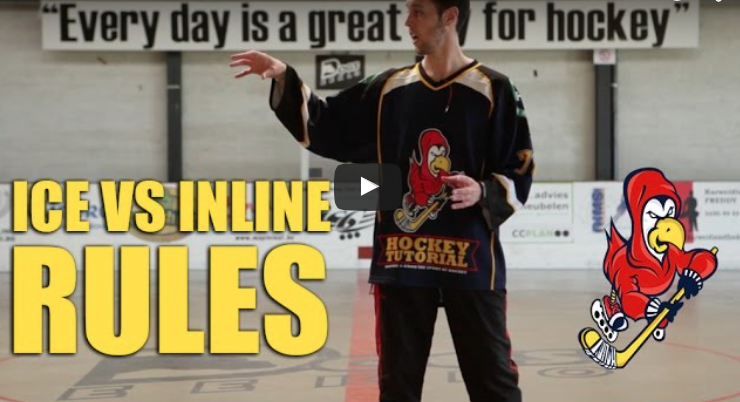Let’s take a look at some of the major rule difference between ice and inline/roller hockey.
Difference Between Ice and Inline, Roller Hockey – Zones
An ice hockey rink is made up of 3 zones, the defensive, neutral and attacking zone. However, inline hockey is only made up of 2; Defensive zone and attacking zone (also referred to as the offensive zone).
Difference Between Ice and Inline, Roller Hockey – Offside
Offside is distinctively different in inline/roller hockey. In ice hockey, the puck must cross into the attacking or offensive zone before any other player(s) at any given time. With inline hockey it’s completely different. Offensive players can be in the offensive zone before the puck enters but they cannot receive a pass until the puck carrier crosses the red centre line. If the puck carrier passes before crossing the red centre line, the play will be called offside.
Difference Between Ice and Inline, Roller Hockey – Icing/Clearing
There is no difference between the icing rule in ice hockey and inline/roller hockey. If the player decides to shoot the puck from behind the centre red line and it goes passed the opposing goalies red line, it’s called icing but in inline/roller it’s referred to as clearing. Depending on your country and league, this might be different.
Difference Between Ice and Inline, Roller Hockey – Number of players
Depending on your league and country this may be different. Inline/Roller in many countries across the world is played 4 v 4 instead of 5 v 5.




